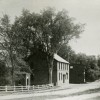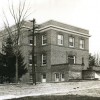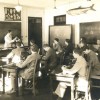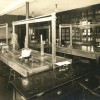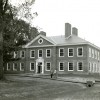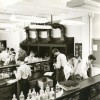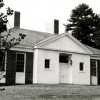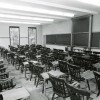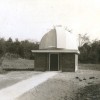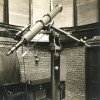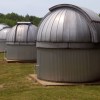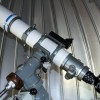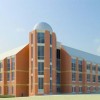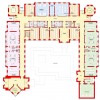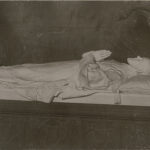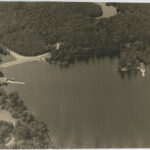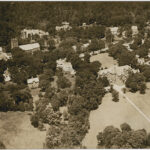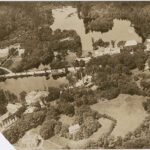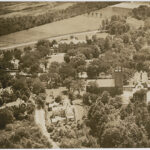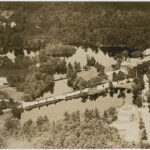With construction of the Lindsay Center for Mathematics and Science now completed, it is fitting that the St. Paul’s School community reflects back upon the places that have served the study of science and mathematics so well throughout the School’s history. Given the times during which they were constructed, the underlying concepts and design of many of these buildings on the grounds were bold, forward-thinking and, by any reasonable measure, highly successful ventures. They were the product of visionary school leadership that championed science and mathematics as critical components to students’ achieving a solid and broad-ranging education upon graduating. These were also buildings that were made possible through the enormous generosity of many benefactors whose love and friendship for the School are a tribute to their families and a gift to generations of SPS students, faculty and staff.
Much of the text shared in the brief captions that accompany photographs of the mathematics and science buildings and classrooms was drawn from detailed articles discovered by searching the Alumni Horae digital archive, accessible online by clicking HERE.
Click on the image title for more detailed information about the image.
Click on the thumbnails above or the titles below to access the individual catalog pages.
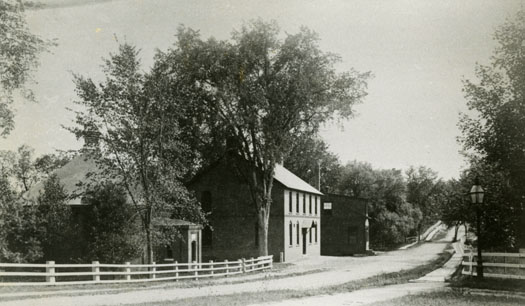
Built in 1889 during the Rectorship of the Reverend Dr. Henry Augustus Coit, the old laboratory, located near the gas house, site of the present day Post Office, hosted the School’s first science classes. A modest edifice, it was converted into a boys’ workshop in 1904 and eventually torn down in 1929 for construction of a dining hall.
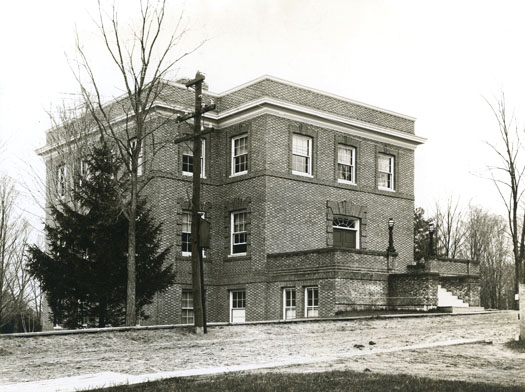
The Westinghouse Lab, constructed in 1902, was a gift of inventor and scientist George Westinghouse, Jr., whose son, George Westinghouse III, was a member of the Form of 1902. In 1903, science courses were offered only in physics and chemistry, and the upper and middle floors of the Westinghouse Lab were designated for this classroom instruction. The ground floor housed a small power plant and also featured a small auditorium that accommodated meetings of the Scientific Association and the Radio Club. Many of the tools and devices from the old lab were transferred to the newer facility for re-use. However, over time, new equipment for teaching general science, biology, astronomy, physical geography, physics and chemistry was acquired.
It is no understatement that the development of robust and steadfast support for the sciences at SPS can be attributed in large part to two early leaders: The Rev. Dr. Samuel S. Drury, whose strong advocacy for the instruction and study of science at SPS assured the Lab’s success and a bright future for science, and former Vice Rector Dr. J. Milnor Coit, who as head of the Science Department for many years was a tireless champion for the teaching of scientific studies.
The Westinghouse Lab was torn down in 1951.
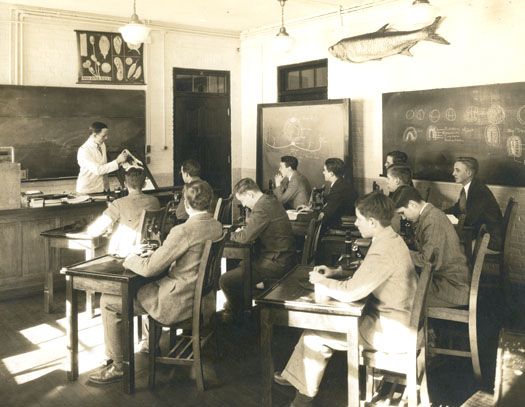
This photograph shows a class at work in the biological laboratory where Fourth Form students took classes in Biology. The School purchased the equipment necessary for this course, including a modern lecture table, individual labor tables, and a compound microscope for each student. It was Dr. Drury’s view that the study of science should be a component of every student’s education at SPS. This included not only the course in Biology but also a general science course requirement for Second and Third Form students.
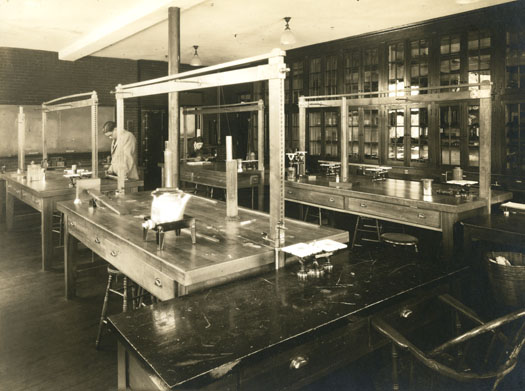
This photograph shows the physics lab where studies included work in heat and electricity. The room could be darkened for performing experiments on the subject of light.
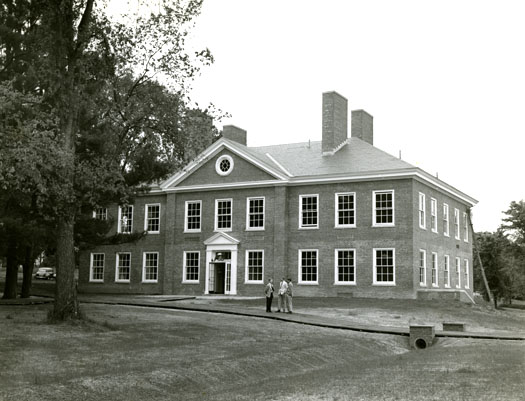
When it was dedicated in 1951, the Payson Memorial Science Building was considered one of the finest among preparatory schools for the study of science. A gift of Mr. and Mrs. Charles Shipman Payson in memory of their son Daniel Carroll Payson ’43, who was killed in action during World War II, the building served as a teaching space and laboratory for the St. Paul’s School community for over half a century until it was razed in December of 2012. The carved wooden commemorative plaque that was displayed over Payson’s front door now graces the entry way of the new Lindsay Center for Mathematics and Science.
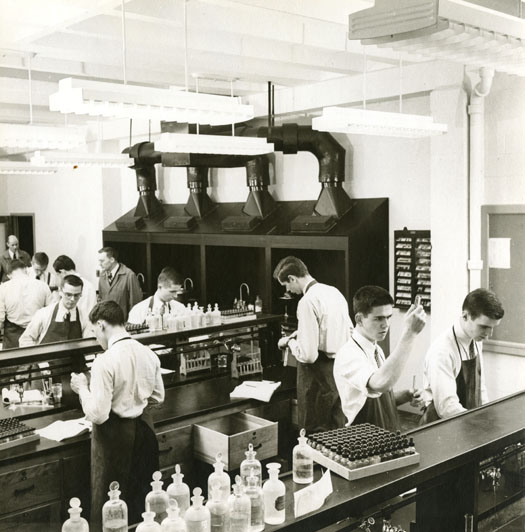
Payson was built to accommodate eight classrooms and three laboratories for chemistry, biology, and physics and a lecture hall large enough to seat one hundred. This photograph illustrates the learning and interactions that occurred within the walls of the Payson Memorial Science Building, and it underscores the vitality and purpose of this well-appointed and stately structure.
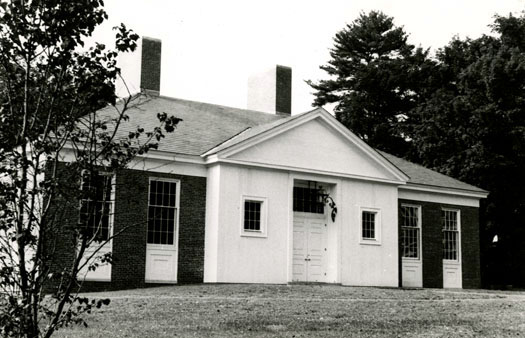
Dedicated in 1959, the Moore Mathematics Building and its furnishings were gifts of Mrs. Paul Moore, Sr. and her children, in memory of Paul Moore, Form of 1904. In addition to generously proportioned classrooms, spaces were earmarked for a Mathematics Library, for faculty meetings, and for gatherings of groups such as the Mathematics Society. Moreover, because of Moore’s central location within easy walking distance to both the Schoolhouse and Payson, students traveling to Moore for classes found themselves with more time to efficiently and conveniently navigate between classes at St. Paul’s School.
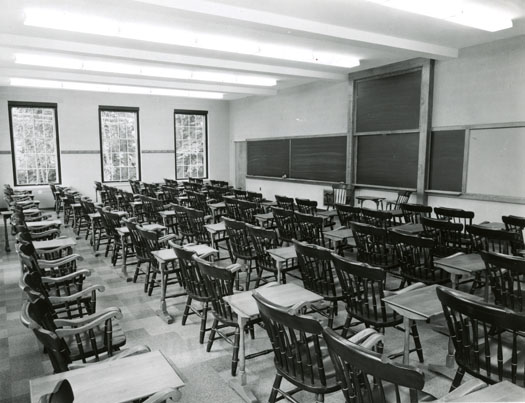
This photograph presents one of the spacious classrooms in the Moore Mathematics building featuring rows of new desks, large bright windows, and generous blackboard space.
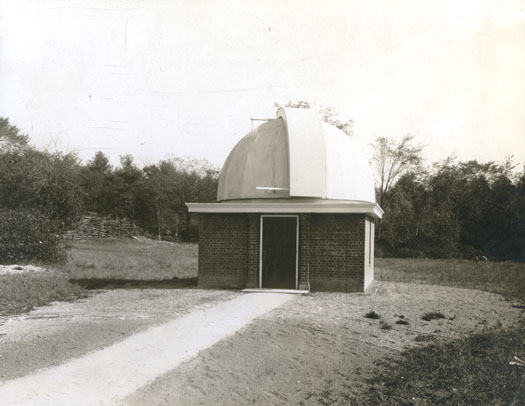
The first St Paul’s School observatory was constructed in 1930 and was located in the field next to the Red Barn. It was used primarily by Lower School science classes and students interested in astronomy.
The October 22, 1930 edition of the Horae Scholasticae includes this information about the Observatory:
The Observatory given by Mrs. Edward Isham in memory of her son, Edward Pierpont Isham (1917-1921), has been completed. This gift has added a new and practical activity to our school life. Not only does it fulfill a long-felt need of the Astronomy department, but it provides interest to the many others who will wish to make use of it. . .
The site of the observatory was chosen by Professor Campbell of the Harvard Observatory staff. The telescope is mounted equatorially and is free to turn parallel to the celestial equator around the polar axis. The position of the star is determined by the settings of two graduated circles: the hour and the declination. A small electric motor is used to keep the telescope fixed on a given star as it moves through the heavens.
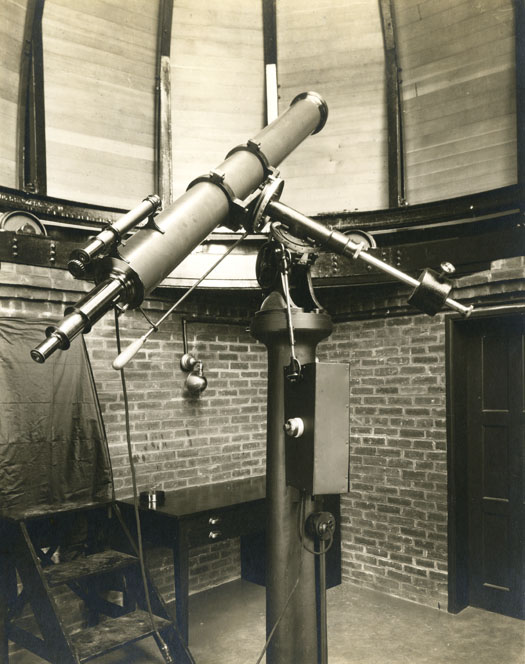
Residing within the 1930 observatory was a 5-inch refracting telescope built in 1893 by Alvan Clark & Sons, the preeminent American telescope manufacturer of the late 19th century.
The October 22, 1930 edition of the Horae Scholasticae includes this information about the Observatory:
The telescope and attendant apparati are in every way perfectly equipped. The lens is a five-inch refracting glass made by Alvan Clark & Sons of Cambridge, Massachusetts. It was formerly the property of Mr. Isham. It is mounted on a six-foot cylinder which has four eye-pieces attached to its lower end. The light gathering power of the aperture as compared with the human eye is approximately 625 times as great. The lowest power eye-piece magnifies 48 times, the highest 300 times.
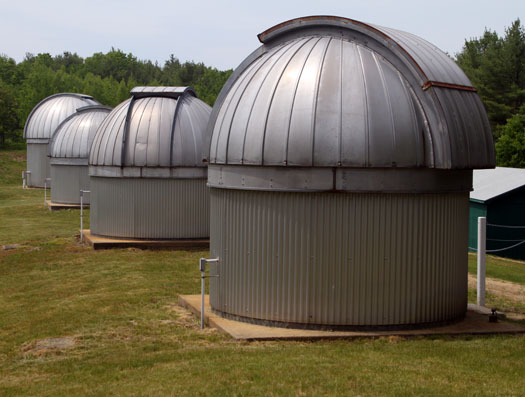
The Lenore and Walter Hawley Observatory, dedicated in 2002, is situated on the School’s former golf course. Pictured from the far right to left are Observatory 1, a green building housing the control and maintenance shops as well as a collection of portable Dobsonian telescopes used in introductory astronomy courses, and four domed observatories. They are Observatory 2 (1985), Observatory 3 (1989), The Lowell Swift Reeve Observatory donated by the Reeve family in memory of Lowell Swift Reeve ’69, and Observatory 5 (2004) which houses the St. Paul’s School Alumni 0.7-meter telescope. Not pictured above is the Chart House, in which there is a modern classroom, library, and image processing laboratory.
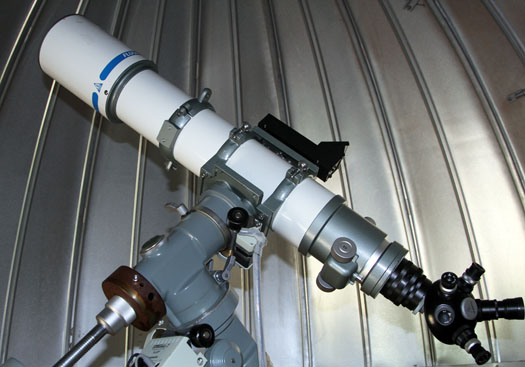
Inside the Lowell Swift Reeve Observatory is a Takahashi FC-125, which is used for magnified views of our moon, the planets and stars.
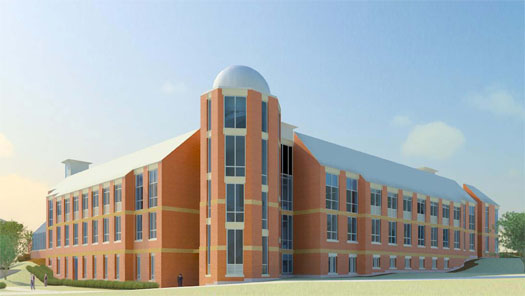
The Lindsay Center for Mathematics and Science is home to 14 science labs, 21 classrooms, two lounge/study rooms, and faculty offices. The design incorporates dedicated classrooms and labs for all courses, configured to foster innovation and collaboration. Classrooms and labs for ecology, physiology, and robotics sit on the ground floor. The second floor houses labs and preparation spaces for advanced chemistry, physics, and astronomy; six math classrooms; and biology classrooms that lead into a greenhouse. The third floor features a suite of chemistry and biology classrooms and labs, two physics labs, and four math classrooms. The third floor also includes a study lounge for students and the faculty offices, in an open-plan space. In addition, the building features a solar observatory and a Foucault pendulum – a 70-pound ball suspended from a 60-foot cable that demonstrates Earth’s rotation through its oscillation – a symbol upon entering the building of the facility’s joint purpose of teaching math and science.
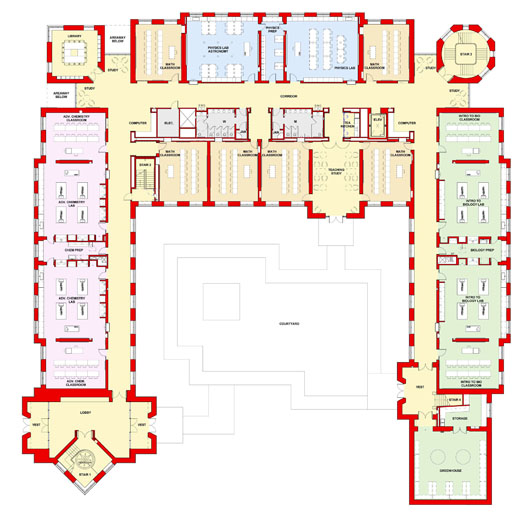
The floor plan for the Lindsay Center for Mathematics and Science reveals a space that is flexible and hospitable to a myriad of both dedicated and shared functions. The building includes fourteen science labs, twenty-one classrooms, two lounge/study rooms, and faculty offices.

